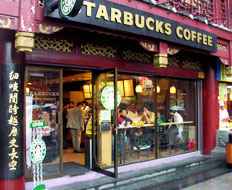Over the last decade, American quick-service behemoths such as McDonald’s, Starbucks, and Pizza Hut have surged into international markets and captured diners’ interests with American dishes. But new data shows the whole industry might pay a price for that global growth.
The growing appeal of U.S. fast food in international markets has shifted world commodity supplies and spurred rising prices.
According to recent data from the U.S. Dairy Export Council, cheese shipments from the U.S. increased 56 percent through the first five months of 2011 compared to the same period in 2010.
In 2001, the U.S. exported 5.5 percent of its dairy production; in 2010, that number approached 13 percent, in spite of rising production.
And there’s no sign of an export slowdown, says Jerry Dryer, publisher of the Dairy & Food Market Analyst newsletter.
“The groundwork is present for a large market, so demand is here to stay,” Dryer says, adding that he suspects dairy prices will rise 25–50 percent higher than the previous five-year average.
This isn’t dairy’s story alone. Red meat and grain face similar issues.
Through mid-July U.S. beef exports stood 27 percent higher than the same period in 2010, reports Drovers CattleNetwork, a cattle and beef market publication. Month after month, beef export tonnage is exceeding imports.
“There’s a new competitor in the marketplace that wasn’t there before, which is increasing demand at a level beyond production,” Dryer says. “That’s creating a real squeeze on prices and the current costs are going to go higher.”
Bill Lapp, an agricultural economist with Omaha, Nebraska–based Advanced Economic Solutions, shares a hypothetical situation rooted in simple supply demand economics: If the U.S. imports lean beef each year from Australia and a certain quantity of that beef gets diverted elsewhere, then the U.S. marketplace encounters a reduced supply. With domestic demand stable, the slimmer supply means only one thing for U.S. prices: they’re going to go up.
“And then this becomes a cost hot potato among the middlemen, the restaurants, and the consumers,” Lapp says.
U.S. exports have continued rising in recent years, largely accredited to the GDP growth in developing economies that has produced a burgeoning middle class, the shift in the value of the U.S. dollar, and the rapid expansion of the biofuel market.
“These are persistent trends we’ve faced over the last five years,” Lapp says.
Dairy consumption has grown at warp speed in China with the rise in popularity of refrigerators.
“As a consequence of refrigeration, we’re seeing more [dairy] consumption,” says Bruce Scherr, CEO of Informa Economics, a Memphis-based food and agriculture research firm. “As more people gain income, this becomes an incredible hook in demand for commodities across the board.”
Increasing commodity prices are nothing new to the restaurant industry, which has endured the impact of dairy, grain, beef, and corn price hikes throughout the last decade. Yet, higher prices at the commodity-cost level have largely been matched by only modest increases at the consumer level.
“This might be disconcerting for a restaurant, but it’s simply an unsustainable practice,” Scherr says.
The shifting reality is one the nation’s quick-service restaurants can no longer overlook. Some may alter prices; some may explore more sustainable, savvy buying programs; and others may simply hope the world’s supply-and-demand scale finds its equilibrium.
Yum! Brands, for instance, has worked to locally source the majority of its products in its international markets, a move to generate a more efficient cost structure.
“We have our own supply chain and distribution system in China,” Yum spokeswoman Virginia Ferguson says.
U.S.-based restaurants face the complicated matter of how to address the new realities amid a consumer base unsympathetic to menu-price increases. Passing along the costs to consumers by way of higher prices or pursuing a higher ticket can be a risky endeavor given the nation’s unshakable battle with high unemployment and stagnant consumer spending.
“A misstep here can result in the loss of market share, and that’s certainly not something restaurant brands want to see,” Lapp says.
Already, retail brands such as Sara Lee Corp. and Kellogg Co. have raised product prices in response to escalating commodity costs. Restaurants might be the next domino to fall.
“Food inflation will continue to accelerate,” Lapp says. “We’ve seen it happen in the at-home portion and we’ll see it register in out-of-home dining as well.”
Scherr says restaurants need to be better price-risk managers, employing staff and systems that better manage risks and margins.
“There’s no question restaurants need to invest in understanding margin-risk activities, because the way they’re working now is not sustainable in today’s newly defined commodities environment,” he says. “It’s not sexy, but it is as important as a viable menu and marketing pizzazz.”










